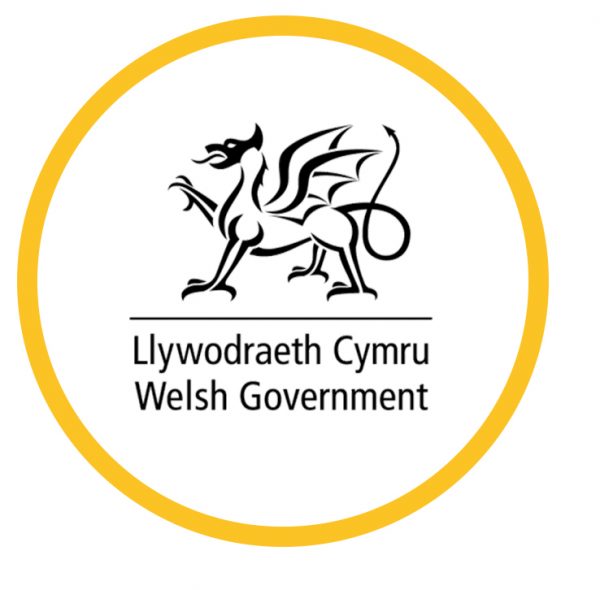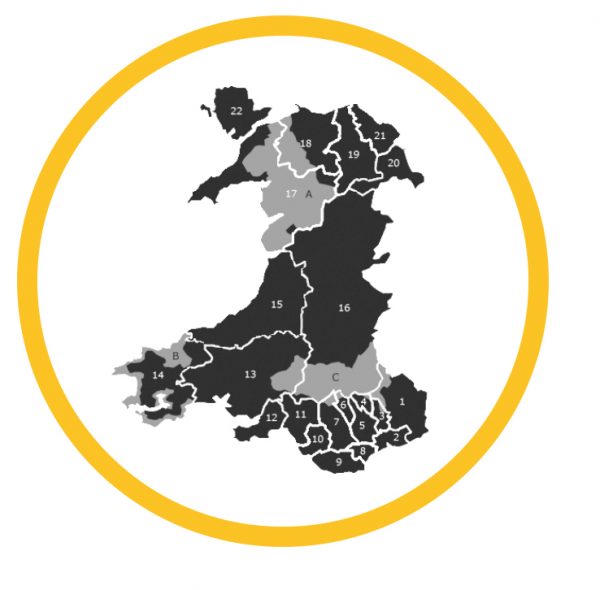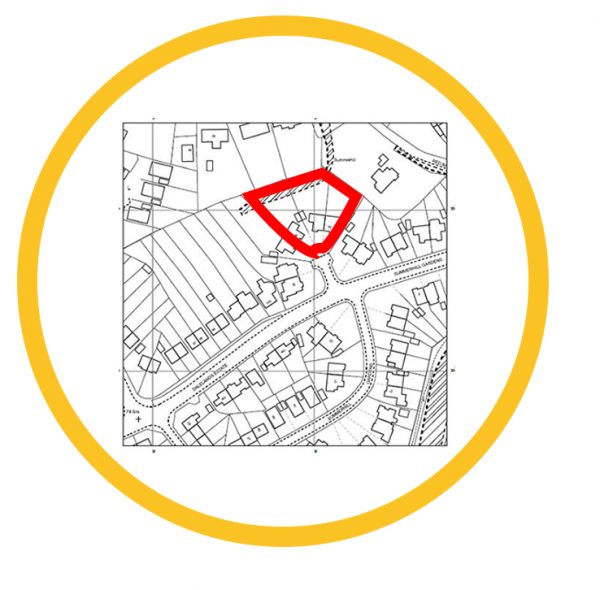Pre-application Consultation: A Guide for Communities

What is this guide?
 This guide is about ‘pre-application consultations’, a new part of the planning applications process in Wales brought in by the Planning (Wales) Act 2015. This guide is designed for community and town councils, community groups and individuals wanting to understand and respond to pre-applications consultations.
This guide is about ‘pre-application consultations’, a new part of the planning applications process in Wales brought in by the Planning (Wales) Act 2015. This guide is designed for community and town councils, community groups and individuals wanting to understand and respond to pre-applications consultations.
It explains new consultation rules developers have to follow before applying for planning permission for ‘major developments’, such as applications for 10 or more houses. It also explains how communities can respond to pre-application consultations. This guide has been prepared by Planning Aid Wales with funding from Welsh Government.
Part 1: Introduction & Overview
Introduction
Pre-applications consultations are an opportunity for communities to help shape the places where we live.
As part of the Planning (Wales) Act 2015, Welsh Government made it compulsory for developers to consult with local communities before applying for larger or ‘major developments’.
In preparing the Act, the Welsh Government identified a need to better involve communities in developments that affect them, and at an earlier stage.
Early and meaningful engagement in planning can:
- Improve the quality and relevance of new developments.
- Give people a voice and build their confidence to influence decisions affecting their local area.
- Build understanding between developers, planning authorities and communities.
This guide explains the pre-applications consultation process developers must follow and how the community and town councils, community groups and individuals can use the process to have their say on development in their area.
Guidance for developers on pre-application consultation is available from:
http://gov.wales/topics/planning/policy/guidanceandleaflets/pre-application-community-consultation-best-practice-guidance-for-developers/?lang=en
A brief overview of planning in Wales
The planning system is concerned with the development and use of land in the public interest.
It helps to shape the future of our cities, towns, villages and countryside.
Who’s who in the planning system?
The Welsh Government sets the legal framework and issues national planning policy and guidance on how the planning system works in Wales.
Welsh Government sets the legal framework and issues national planning policy and guidance on how the planning system works in Wales.
The Planning Inspectorate decide planning appeals and examine Local Development Plans on behalf of Welsh Ministers.
 Local Planning Authorities (referred to as ‘planning authorities’ in this guide) set local planning policy through Local Development Plans, decide planning applications through development management and enforce against breaches of planning control. There are 25 planning authorities in Wales – 22 unitary councils and three national park authorities.
Local Planning Authorities (referred to as ‘planning authorities’ in this guide) set local planning policy through Local Development Plans, decide planning applications through development management and enforce against breaches of planning control. There are 25 planning authorities in Wales – 22 unitary councils and three national park authorities.
 Developers are generally landowners who are seeking planning permission for new land uses and the construction of new buildings.
Developers are generally landowners who are seeking planning permission for new land uses and the construction of new buildings.
Statutory consultees are organisations and bodies who must be consulted on relevant planning applications by law. These include agencies like Natural Resources Wales, highways authorities and community councils.
What is development management?
Development management is the process planning authorities make decisions on applications for planning permission submitted by developers.
Before an application can be decided, the planning authority must inform consultees, notify adjoining neighbours by letter and publicise planning applications via site notices, and via their own websites, inviting comments on the application.
Members of the public and organisations that represent them are entitled to comment on planning applications, providing they do so within the time specified by the notice (usually 21 days).
Planning applications are decided against material considerations, or matters that are relevant to planning. The most important consideration is the development plan. See Parts 3 and Parts 4 for further information.
The pre-application consultation process is a new part of the development management process. Before submitting applications for major developments, developers must now advertise and consult communities for a minimum of 28 days before they submit a planning application.
More guidance on all aspects of the planning system in Wales is available from:
Planning Aid Wales: www.planningaidwales.org.uk/about-planning
Welsh Government: http://gov.wales/topics/planning/policy/?lang=en
Part 2: About pre-application consultations
What is pre-application consultation?
Pre-application consultation is where a developer consults with the community on a major development, before they apply for planning permission.
By talking to the local community, developers are able to understand your views and opinions on the scheme and take them into account before they submit a planning application.
It is now a legal requirement for developers to consult the local community before applying for planning permission for major developments.
Mandatory pre-application consultation only applies to major developments.
The other ‘pre-application’…
Pre-application consultation is a separate process to the pre-application advice service provided by planning authorities to developers.
This is a chargeable service that a planning authority is required to provide to developers to help them to identify whether planning permission is required and what policies, material considerations and constraints will be relevant to a decision on their application.
What is major development?
These are developments which can have an impact greater than the local neighbourhood, such as quarries or new housing and retail developments.
Major developments include:
 |
10 or more dwelling houses. |
|---|---|
 |
Outline applications on a site of 0.5 hectares or more where the number of dwellings has not been stated; |
 |
A building or buildings where the floor space to be created is 1,000 square metres or more; |
 |
Mining – the winning and working of minerals or the use of land for mineral-working deposits; |
 |
Waste development; and, |
 |
Development carried out on a site having an area of 1 hectare or more. |
What do developers have to do?
A minimum standard has been set by Welsh Government that all developers must meet as part of pre-application consultation.
The minimum standard includes:
-
- Making draft planning application documents available to view;
-
- Notifying the right consultees;
-
- Providing a 28 day notice period; and
- Reporting how the pre-application consultation and how people’s views were considered by submitting a Pre-Application Consultation Report (PAC Report) when they submit the planning application.
Whilst the law sets out the above minimum requirements that the developer must follow, a developer can go beyond these minimum standards to gain a greater level of engagement with the local community – see section 2.8 for more information.
For example, a developer may choose to present their proposal at public meetings or at community council meetings if they are invited to do so.
Where a developer only undertakes the minimum requirements, this still provides an opportunity for the community to shape the forthcoming application.
What documents must be made available?
The developer must make available all the draft information relating to the planning application. This does not need to be the final version of the documents, but they should provide a reasonable overview of the proposal.
This information should be made available in a venue near the site and / or via a website for at least the 28 days when comments can be made. The start and end dates of the consultation period will be stated in the letter and site notice.
If the draft application is only available on a website then the developer must also provide an address of a library or other location where internet access is available for viewing the proposal online.
How should the consultation be advertised?
 To make the local community aware of the proposals and that the draft application documents are available to view, the developer must advertise the pre-application consultation.
To make the local community aware of the proposals and that the draft application documents are available to view, the developer must advertise the pre-application consultation.
They must do this by:
-
- Sending letters or emails to the relevant parties; and,
- Displaying a site notice.
Letters
The developer must write to neighbours of the proposed development, any community or town council(s) and the local member(s). A neighbour is any owner or occupier of land that is next to the proposed site.
The community or town council is any council where the development is situated and the local member is each councillor representing an electoral ward in which the proposed development is located.
Consultation letters should contain:
- A basic description / details about the proposed development.
- Where you can find more information (on a website and / or at a local venue such as a local library).
- How you can contact the developer to make your views known.
Where the development crosses a boundary, the developer should write to both councils and members. The developer is able to consult by letter or email.
All parties then have 28 days to comment on the proposal.
Site notices
A site notice is a public notice located on or near to the site that is designed to inform the general public about the proposal.
The developer must make reasonable efforts to make sure the notice remains there for at least 28 days during the consultation period.
The notice must tell the general public about the intention to develop the land; where more information can be found about the proposal (on a website and / or at a local venue such as a local library); and, how comments can be made to the developer about the proposal.
Sometimes a developer will erect more than one site notice if the site is very large, or there are many roads or footpaths nearby.
Specialist consultees
As well as engaging with the local community, the developer must engage with specialist consultees.
These are consultees set out in legislation and often have a specific interest such as nature conservation or water and sewerage provision, which may be affected by a proposal.
How must the developer take comments into account?
Once the developer has told local communities and specialist consultees about the proposal and received their comments, a report must be prepared called the Pre-Application Consultation Report (PAC Report).
This report must then accompany the application when it is sent to the planning authority. Applications for major development will not be validated without the PAC report.
The Pre-application Consultation (PAC) report must:
- Show how neighbours, local communities and key consultees were informed about the proposal;
- What comments were received on the proposals; and
- Explain if and how these comments were taken on board by the developer when finalising the scheme, and if they haven’t made any changes, why.
Beyond the requirements
Whilst legislation sets out the minimum requirements a developer must follow, developers can often enhance the consultation process by adding additional consultation activities to secure greater participation.
This can be as little as increasing the number of people directly informed about the proposal to holding public meetings. The Welsh Government has produced a best practice guide for developers on ways to undertake pre-application consultation.
Where a developer undertakes further consultation, you will still receive the minimum information, and have at least 28 days to respond as required by the mandatory consultation process. As the developer will wish to ensure they have complied with the legislation, you may even receive more than one letter/leaflet about a proposal, one voluntary, one containing the mandatory information.
How communities can help
As well as the developer proactively consulting, the community can play an important part in raising awareness and securing input into a consultation.
For example, the use of ‘word of mouth’, community groups, and social media can help reach other parts of the community who may be interested in the proposed development.
The community or town council can also proactively provide information and advice to developers about consulting in their area. They will have valuable local knowledge not only about the built environment, but also about the most effective ways to engage their own community. This could include ways to make the statutory consultation more effective (such as email contacts for the Council, or a locations for displaying material) to suggestions on how they could consult more widely.
Relationship-building in action
Having received several pre-applications consultations from developers, a town council in west Wales started inviting the developers to present their proposal at council meetings.
Several developers responded and came to present. Not only did this help the council members understand the proposal, it started building a positive, ‘listening’ relationship between the developer and the community.
Part 3: Responding to pre-application consultations
Who can respond?
Anyone can respond to pre-application consultation. This includes those who have been directly consulted and individuals, community groups and specific interest groups who wish to comment after finding out about the proposal.
Local Members are also able to make comments as part of the consultation process. Members who sit on a planning committee can comment but should be aware while they are entitled to hold a preliminary view about a particular matter they must not pre-determine any future application.
Therefore, in making comments they must ensure they keep an open mind and are prepared to consider the merits of all the arguments and points made about the development before reaching any decision on a future planning application.
Is the planning authority involved?
The pre-application consultation is between the developer and the community, and your planning authority may not even be aware an application is being prepared.You need to ensure your comments are made to the developer so they can be taken into account before an application is submitted.
The planning authority may be able to provide you information on where to view previous site history or the Local Development Plan (LDP). However, comments on the development should only be made to the planning authority when a planning application is submitted.
When to respond
The time period for responses will be set out in the letter and site notice and the developer must take account of comments made during this 28 day period.
Comments made after this time may not be taken into account, however you can contact the developer to ask for an extension of time. Don’t wait until the application is submitted to the planning authority, so you can make your comments to them.
Responding to the developer allows them to amend the scheme to accommodate changes. After the scheme is submitted, they may not make any changes.
What can you comment on?
Anyone can comment upon anything that they consider is relevant to the application. However, whilst developers must take into account views presented, planning is concerned with material considerations and other matters will hold little weight.
A material consideration is a matter that should be taken into account in deciding whether the future planning application should be granted or refused.
Material considerations
These can include (but are not limited to):
- Proposals and policies in the LDP;
- Government policy;
- Overlooking/loss of privacy;
- Parking;
- Highway safety;
- Traffic;
- Noise;
- Effect on listed building and conservation area;
- Layout and density of buildings;
- Design, appearance and materials;
- Previous planning decisions (including appeal decisions); and,
- Nature conservation.
However, issues such as loss of view, the negative effect on the value of properties, or the reasons or motives of the applicant (for example if the development is thought to be purely speculative or any profit likely to be made), are not material considerations.
Community Benefits / Local Need
Planning authorities can seek contributions from developers to offset negative consequences of development, to help meet local needs, or to secure benefits which will make development more sustainable in two ways:
- Section 106 Agreements. These are a private legal agreements between the developer and the planning authority, and must be directly related to the site. Section 106 agreements could be used to provide direct site access, flooding or wildlife protection measures and on-site leisure provision such as open space or play areas.
- The Community Infrastructure Levy (CIL) allows local authorities to raise funds from developers to support infrastructure improvements across their area, such improvements to roads, park/open space improvements or a community facilities that aren’t connected to the site.
More information on Section 106 and CIL is available from: http://www.assembly.wales/Research%20Documents/QG15-007-Planning-Section%20106%20agreements/QG15-007.pdf
Pre-application consultations provide an opportunity for your community or town council or community group to communicate local needs directly to the developer. This might include suggestions to provide affordable housing, public open space or play areas as part the site / proposal.
After the application has been submitted, you may also present your views on the needs of your local area or suggest conditions which might limit the impact of the application as part of your response to the planning authority.
If your planning authority has adopted CIL, they should publish a list of the projects or types of infrastructure that it intends to fund, or may fund, through the levy. Local Development Plan consultations are an opportunity for you to emphasise larger infrastructure needs (schools, roads etc.) that would benefit your area.
Place Plans present an opportunity for community and town councils (or community groups) to identify and evidence the infrastructure needs in their community area. Planning Aid Wales has prepared further guidance on Place Plans, which is available from: www.placeplans.org.uk
Making your comments
Responses should be made in writing to the developer using the details provided. The following section provides some useful tips you may wish to consider when putting together a response.
Have you fully considered the proposal?
 All comments should be based on fact and it is important to understand precisely what is being proposed and the potential impact this may have. You may want to take a look at the site and its surroundings.
All comments should be based on fact and it is important to understand precisely what is being proposed and the potential impact this may have. You may want to take a look at the site and its surroundings.
Before making any comments make sure you have viewed the plans and not relied on other people’s opinion.
Examples of questions you could ask yourself / your group:
- Is it acceptable? If not, why not?
- Does it comply with Local Development Plan policies or any Supplementary Planning Guidance?
- Does it fit with your village / town / place plan?
- Is the number of houses appropriate? If not, why not?
- Is the layout / design right – e.g. will it integrate with the existing community? Does it visually fit into its surroundings?
- Is the size / height of the buildings appropriate?
- Will it affect traffic and if so, to what extent?
- Will it impact local wildlife, and if so, how?
- Does it involve the demolition of buildings that are of value to the community?
- Will it increase the risk of flooding?
How could the development be improved?
 If the development was to go ahead, what could make it better? Where you are able, set out what changes you would like to be made to the development to make it more acceptable.
If the development was to go ahead, what could make it better? Where you are able, set out what changes you would like to be made to the development to make it more acceptable.
You do not need to redesign the scheme; however the more explanation you can give will assist the developer.
For example:
- Are there improvements that could be made to the design or layout that would make it better or have less of an impact?
- Are there conditions that could be added to limit any negative impacts?
- Are there relevant benefits that could be obtained for your community?
Refer to the Local Development Plan
 The Local Development Plan is the most important consideration when deciding planning applications, unless there any other relevant material considerations suggest otherwise.
The Local Development Plan is the most important consideration when deciding planning applications, unless there any other relevant material considerations suggest otherwise.
Refer to planning policy that may be relevant, but there is no need to copy out the whole policy as these will be readily available.
Refer to other material considerations
 Refer to material considerations and why you believe they support or should change the development. It can be tempting to cover a variety of matters, but including irrelevant points may mean that relevant issues are lost.
Refer to material considerations and why you believe they support or should change the development. It can be tempting to cover a variety of matters, but including irrelevant points may mean that relevant issues are lost.
Keep it concise
 Keep comments focussed, brief and concise. Making use of sub-headings to illustrate each point can ensure that relevant issues are not lost. You can also include other information i.e. photographs to illustrate your particular points.
Keep comments focussed, brief and concise. Making use of sub-headings to illustrate each point can ensure that relevant issues are not lost. You can also include other information i.e. photographs to illustrate your particular points.
Make your comments FOCUSSED:
Focus on the key issues
O
Concise
U
Strong structure
S
Evidence-based
Diplomatic !
Part 4: After you have responded
After you have responded
After completing the pre-application process, the developer will then submit a planning application to the planning authority.
The planning authority will then process the application, as described below.
Step 1 – Validation
The planning authority will check each application to make sure all documents and fees required have been submitted. For major developments, applications will not be validated without a PAC report which sets out the developer’s response to comments received, and if they haven’t made any changes, why.
Step 2 – Consultation and publicity
The planning authority will notify the public and neighbours about the application. This will include letters to neighbours, notifying the community or town council, and advertisements in a local paper and a site notice.
These will indicate how to view plans and the deadline for making comments, usually 21 days from the date of publishing. They will also send consultations to various specialist bodies to obtain their expert view.
This stage allows you to make your comments to the planning authority. These comments can raise any material consideration about the development.
Things to look out for in the PAC report:
- What has changed in the proposal?
- Have your comments been acted on?
- If not, are there reasons why?
If you commented at the pre-application stage, you could review the PAC report to see how your comments were taken into account.
If you feel the views you expressed have been considered and addressed you can inform the planning authority of this.
If you feel your views have not been considered and they were related to relevant planning matters, you may wish to inform the planning authority as part of your comments on the application.
Planning Aid Wales have produced a guide to commenting on planning applications. It suggests ten ways for you to respond to an application, and explains how to put forward your views in the best possible way. It is available to view here.
Step 3 – Consideration
The application will be assessed by the LPA, taking into account planning policies, consultation responses and public representations.
If problems are identified with the application which there is scope to address through alterations to the proposal, the officer may contact the applicant to seek suitable amendments. Dependent on the scale of the amendments, step 2 may be repeated.
Step 4 – Decision
Applications for planning permission must be determined in accordance with the Local Development Plan for the area, unless material considerations indicate otherwise.
It is the duty of the planning authority to decide each application on its planning merits, taking account of the substance of local views, relevant local and national planning policies and any other material considerations.
The decision may be taken by an officer under a delegated decision or by the planning committee.
The Council’s scheme of delegation sets out what of decisions that designated officers can make on behalf of the Council. Where delegated powers cannot be used, the Planning Committee make the final decision as to whether to approve or refuse the application.
Committee meetings are open to the public, so general public may attend and listen to the debate. You may also have an opportunity to address the committee to present your views.
Summary
Participating in the planning process helps communities to shape developments.
Supporting a proposal or suggesting amendments or conditions that will alleviate your concerns is important.
However, if you have objections to the principle of the development, outline them against relevant material considerations, but be aware the developer may still proceed with an application.
Some do’s and don’ts
-
- Get to know how the planning system works.
-
- Fully consider proposals from developers.
-
- Try to open a dialogue with the developer; this may lead to positive working relationships on future applications also.
-
- Get to know and understand the Local Development Plan and policies that might affect the application.
-
- Refer to material considerations in your responses to developers (and the authority).
-
- Make it clear that you are supporting a development if you have no objections.
-
- Keep your comments focussed and relevant.
-
- Assume that the planning authority is aware of the pre-application.
-
- Leave it too late to respond – contact the developer and ask for an extension if you don’t have enough time within the 28 days.
- Be afraid to negotiate for community benefits from the planning system.
Question not answered?
If you are still looking for advice, you may be able to get assistance via our free telephone Helpline.
